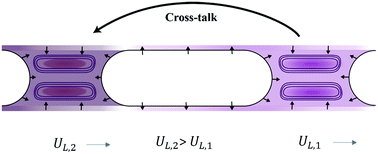Mass transfer dynamics in the dissolution of Taylor bubbles†
Abstract
The knowledge of thermodynamic and mass transfer parameters in gas–liquid systems is critical for the design of macroscale units for separation and reaction processes. The phenomenon of shrinkage of Taylor bubbles upon dissolution has the capability of supplying these design parameters, provided a reliable mathematical model is available for data deconvolution. Unfortunately, the existing models in the literature suffer from at least one of the following three major limitations. First, mass transfer between the bulk liquid segment and the surrounding liquid film has been incorrectly estimated. Second, the liquid segment is assumed to be well mixed, even though there is clear evidence of the contrary in the literature [Yang et al., Chem. Eng. Sci., 2017, 169, 106]. Third, an average mass transfer coefficient is assumed to be valid throughout the dissolution process, despite the fact that bubble velocities can change significantly during dissolution. In this work, we have rectified these limitations and developed a detailed model that takes into account the local concentration gradients and the flow profiles, without resorting to the computationally expensive, full numerical simulations of the fluid flow and concentration distribution equations. To validate the model, experiments were carried out in circular, silica capillaries of different radii by generating segmented flow of CO2 in physical solvents, and the diffusivity and the solubility were subsequently extracted with an error of less than 5%. This work can be extended to the study of gas–liquid–solid reactions in the Taylor flow configuration, and applied to the design of catalyst-coated monolithic reactors.



 Please wait while we load your content...
Please wait while we load your content...